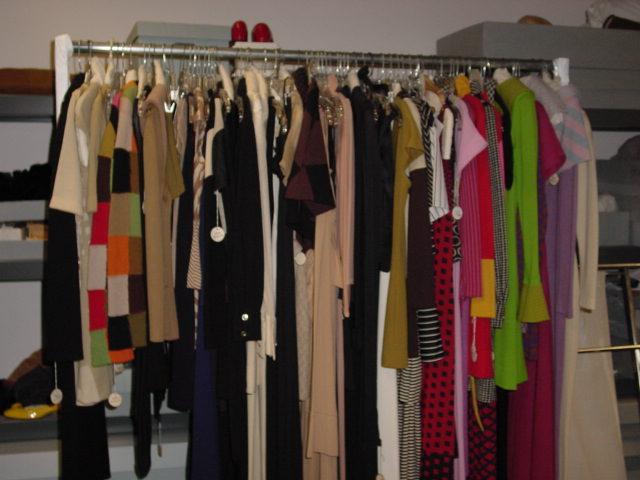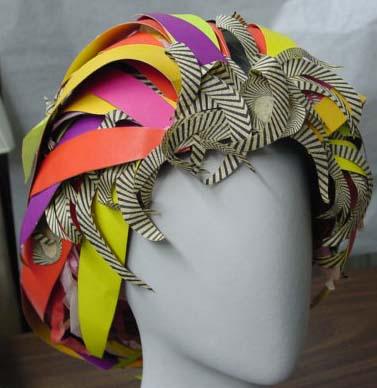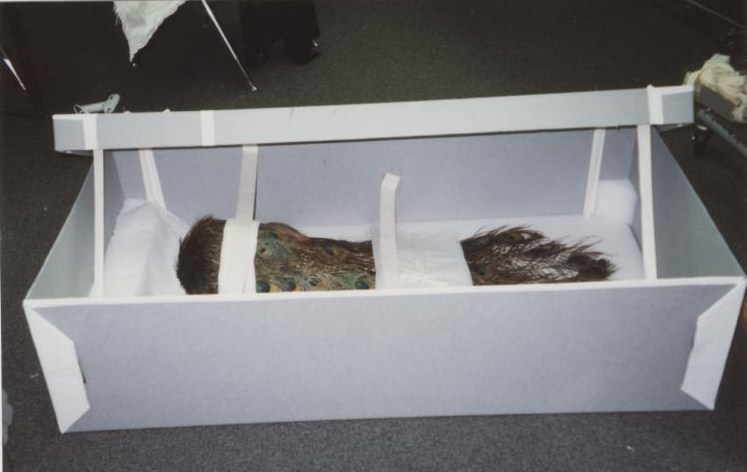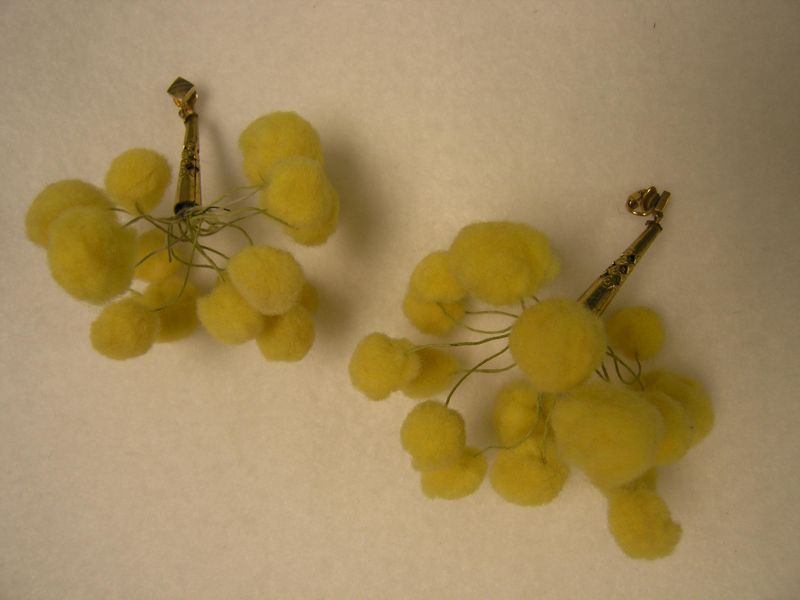Transforming the Rudi Gernreich Archive
If you read this post, you'll know that the FIDM Museum houses an extensive Rudi Gernreich Archive. The Archive numbers nearly 1,000 items and includes not only garments and accessories, but patterns, furniture, scrapbooks and other miscellaneous items. We received the objects that now comprise the Rudi Gernreich Archive soon after Gernreich's death in 1985. At that time, the objects were placed in a separate storage area, away from the bulk of the FIDM Museum collection. Though intentions were good, objects were not always stored with an eye to long-term preservation.
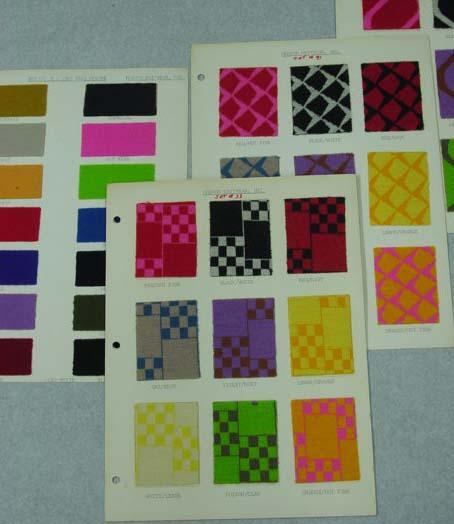
Pages from one of the Gernreich swatch books.
In the summer of 2005, our Collections Manager Christina Johnson and Gillian Zink, a volunteer intern, spent several weeks documenting and rehousing the entire Rudi Gernreich Archive. There was much room for improvement, as the objects in the Archive had become disorganized over time. Many objects needed to be rehoused so as to preserve the entire Archive for future generations of Gernreich enthusiasts. Our post today will walk you through some of the steps taken by Christina and Gillian to preserve the Rudi Gernreich Archive. With this post, we hope to show you some of the "behind-the-scenes" aspects of working in a museum and acknowledge that there is always room for improvement!
Before transformation
From a museum perspective, there are several undesirable things happening to these Rudi Gernreich garments. Gernreich often used stretch knits in his designs. Some of those stretch garments, along with other Gernreich pieces, hung on the rack above for many years. Over time, knit fabric stretches, distorting the original shape of the garment and stressing the fibers. There is no way to reverse this process. Further damage can be prevented by storing knits horizontally. With this in mind, Christina and Gillian placed all knit Rudi Gernreich garments into 60" archival boxes. Also, the use of unpadded, plastic hangers is detrimental to all types of garments, not just knits. All hanging garments in our collection now hang on padded hangers. The padding helps eliminate some of the stress placed on the shoulder area, preserving the lifespan of the garment.
After transformation
Behold our new compact storage! These rolling storage units provide a stable environment for hanging garments. All of the Gernreich garments hang in the same direction, with a tag placed on the left sleeve. Tags are used to note information about each garment, including accession number, object date and donor information. Before hanging, each garment is placed on a padded hanger. We order wooden hangers, wrap them in quilt batting and cover each hanger with a muslin sleeve. The assembly is usually completed by volunteers or interns.
Gernreich was interested in producing a unified Total Look. To this end, he created garments meant to be coordinated with belts, hats, jewelry, etc. The one-of-a-kind paper "bird' headdress seen above coordinates with a vinyl mini-dress. Both can be seen in the in the 1966 Gernreich fashion film, Basic Black. The boxed peacock headdress below also dates from 1966. It is from one of Gernreich's Total Look animal ensembles, also seen in Basic Black. The elaborate headdress is supported by a mount and is tied in place with twill tape. The pale blue box is archival, meaning it will not deteriorate over time. As a regular cardboard box deteriorates, it will turn the items inside a yellowish color. We don't want this happening to any of our objects, so all items which require a box are stored in archival boxes.
Like many museums, we have a collection of prop objects which are used for exhibition purposes. These objects are period appropriate, but not suited for a museum collection. Prop items are used to complete an ensemble, giving a sense of how a particular garment would have been accessorized in its own era. We expect that all prop items will have a limited lifespan. The earrings below were found in the prop collection during Christina and Gillian's survey of the Rudi Gernreich Archive. Though they are 1960s Gernreich earrings, they had somehow found their way into the prop collection. It is so fortunate they were found in time!
While we have made great strides in protecting and preserving the objects in the Rudi Gernreich Archive, there is always more to be done. Though we were able to place all knit garments in horizontal boxes, these boxes are too full. At some point, these items will need to be redistributed in more boxes. All museum storage areas have room for improvement and all museum professionals do our best to oversee the objects in our care. If your museum is facing a similar project, we wish you the best of luck!
